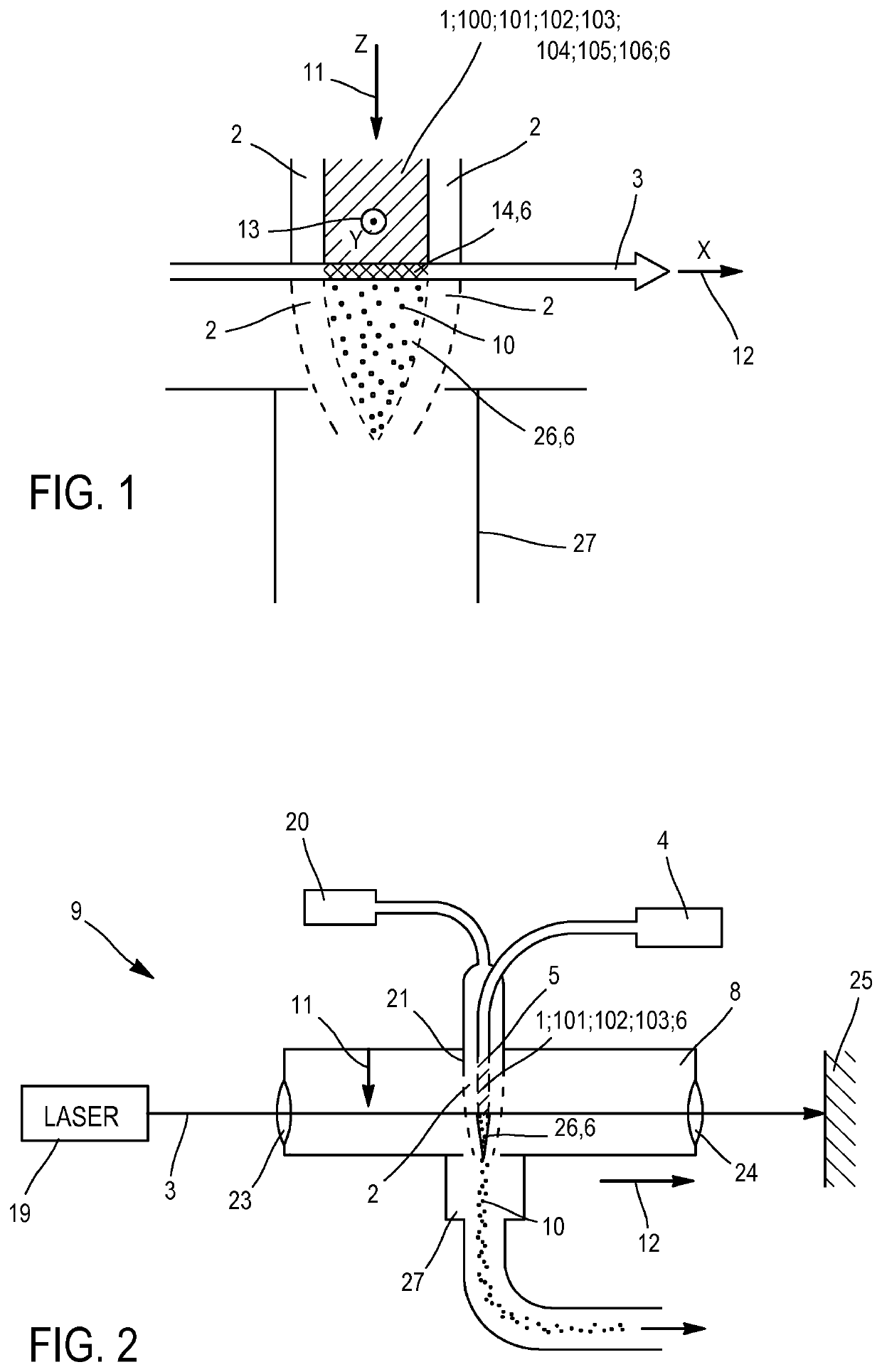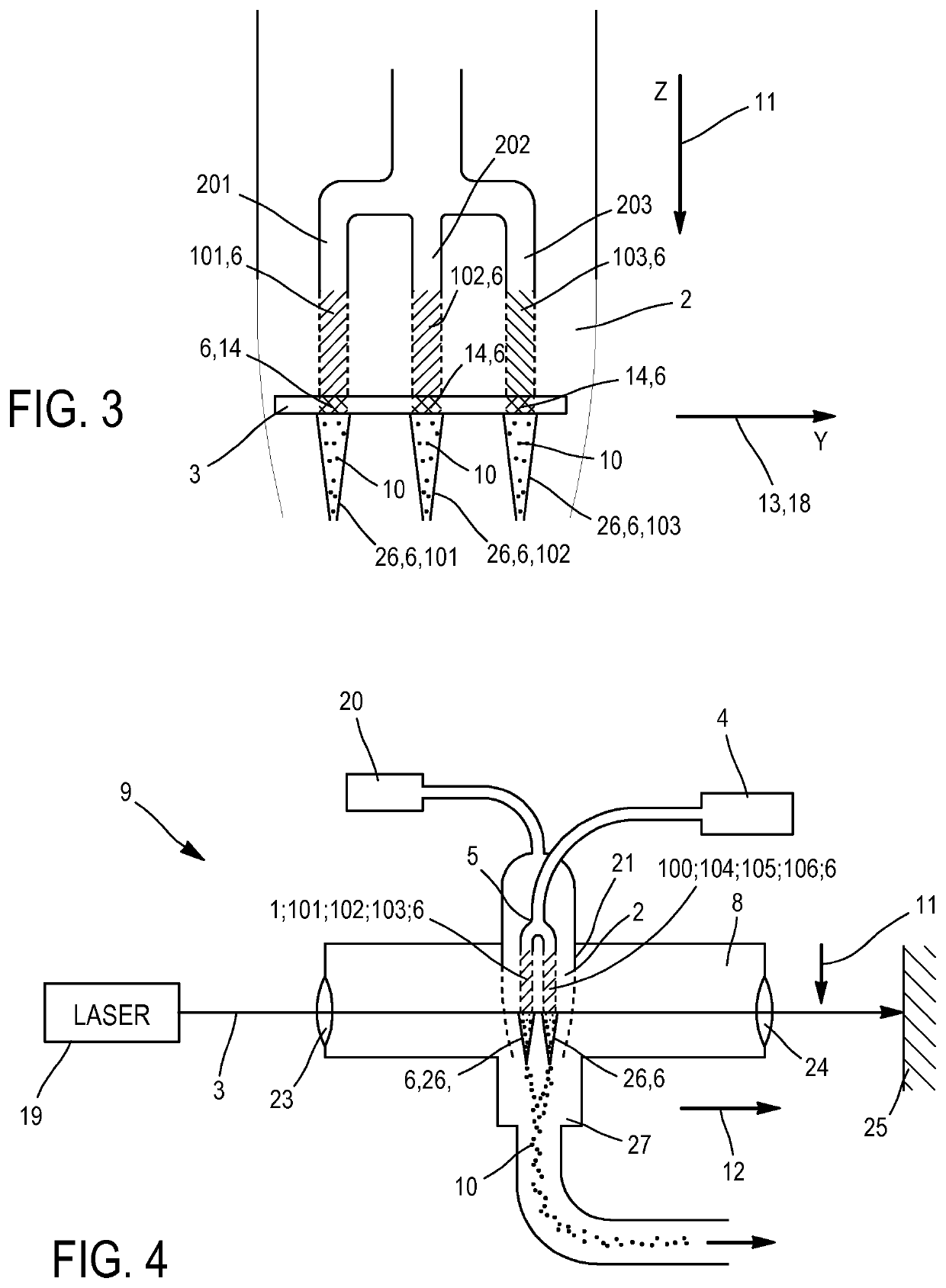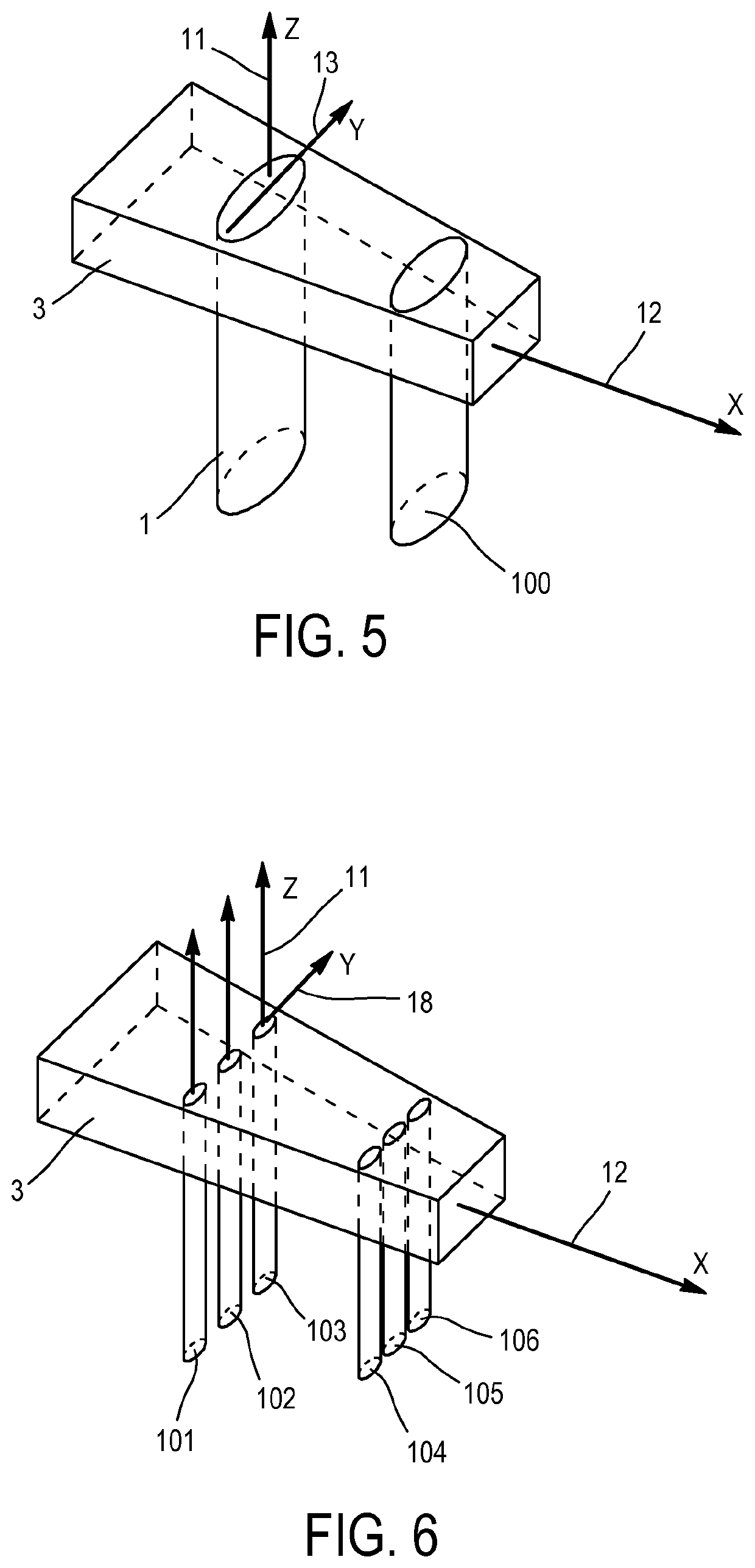Method for producing multilayer submicron particles by laser pyrolysis
a technology of laser pyrolysis and submicron particles, which is applied in the direction of chemical vapor deposition coating, inorganic chemistry, nanotechnology, etc., can solve the problems of limited types and possible number of uses of these particles, and achieve the effect of preventing any oxidation of the silicon cor
- Summary
- Abstract
- Description
- Claims
- Application Information
AI Technical Summary
Benefits of technology
Problems solved by technology
Method used
Image
Examples
third embodiment
[0153]Particles according to the first example were produced with the first, second and third embodiment of the device 9 alone or in combination.
[0154]The size of the particles 10 obtained corresponds to a core diameter comprised between 10 and 500 nm (with a standard deviation between 2 and 60 nm), and a layer thickness 16 between 1 and 5 nm. The particles are not necessarily perfectly spherical. By core diameter is meant the distance linking the two most distant points of the core (for example the length in the case of a rod-shaped core).
first embodiment
[0155]Using the device according to the invention, for which the second chemical element is introduced into the chamber 8 with the first chemical element in each reaction flow 1, 100, 101, 102, 103, 104, 105, 106, it is observed that the layer 16 is not perfectly uniform, as illustrated in FIG. 9.
[0156]This may be due to the fact that according to the invention each reaction flow is devoid of agent oxidizing the first chemical element. The fact of not using any oxidizing agent is counter-intuitive, particularly in the case of a layer 16 of carbon, as oxidizing agents are known to dehydrogenate molecules such as C2H4, C6H6 etc. and thus to assist the formation of solid carbon.
[0157]Better results are observed from the second or third embodiment alone than from the first embodiment alone.
[0158]The homogeneity of the layer 16 can be markedly improved by using the second and / or third embodiment of the device according to the invention, wherein the second chemical element is introduced i...
PUM
| Property | Measurement | Unit |
|---|---|---|
| thickness | aaaaa | aaaaa |
| thickness | aaaaa | aaaaa |
| frequency | aaaaa | aaaaa |
Abstract
Description
Claims
Application Information
 Login to View More
Login to View More - R&D
- Intellectual Property
- Life Sciences
- Materials
- Tech Scout
- Unparalleled Data Quality
- Higher Quality Content
- 60% Fewer Hallucinations
Browse by: Latest US Patents, China's latest patents, Technical Efficacy Thesaurus, Application Domain, Technology Topic, Popular Technical Reports.
© 2025 PatSnap. All rights reserved.Legal|Privacy policy|Modern Slavery Act Transparency Statement|Sitemap|About US| Contact US: help@patsnap.com



